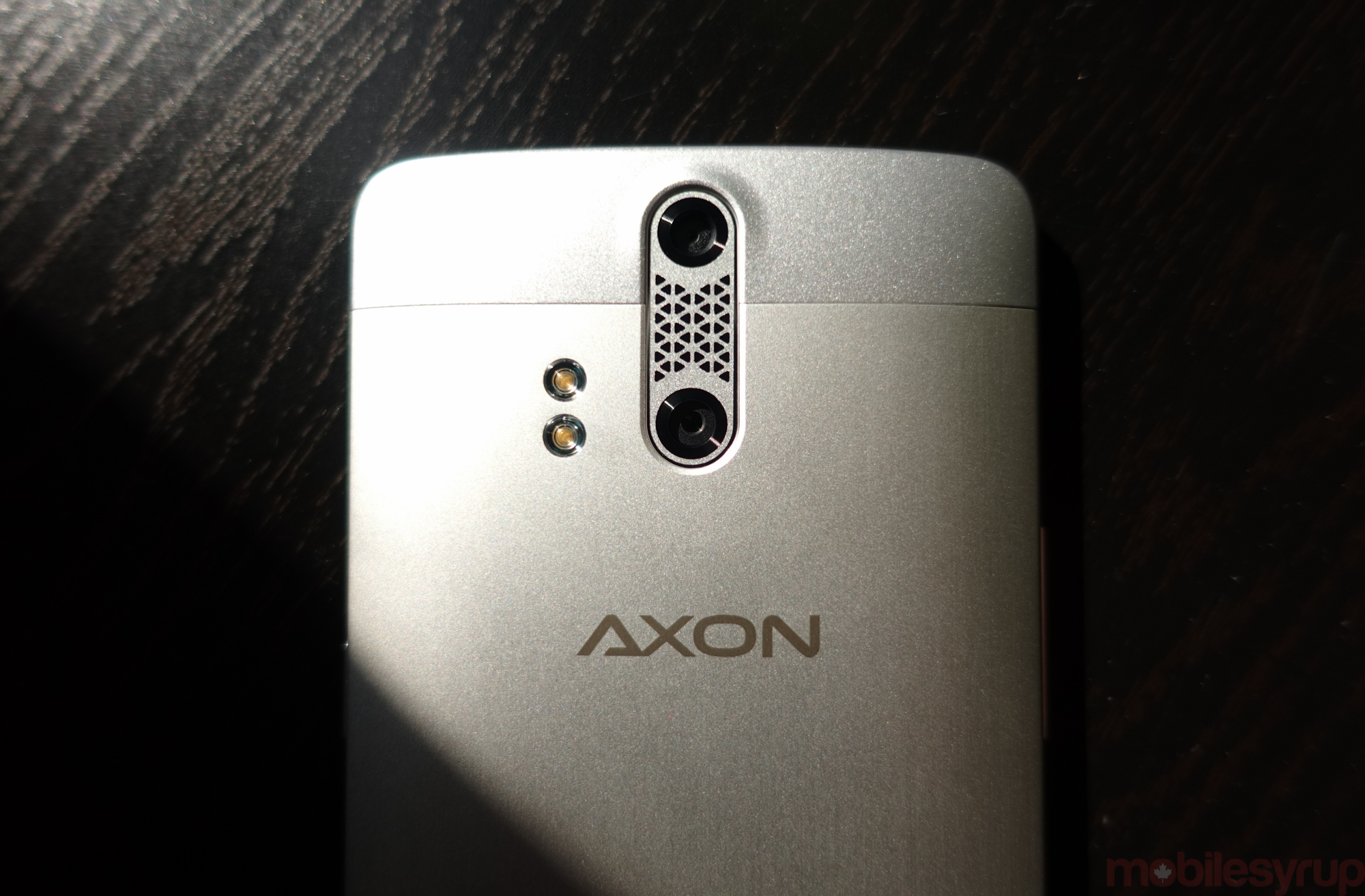
Last October, I got to speak to some really smart people about the difficulties in building a brand in a new country. Those people worked for ZTE, the Chinese giant trying to break into the North American market.
As entrenched as the incumbents are today, it wasn’t long ago that companies like Apple and Samsung had no share of the smartphone market, going up against big names like Nokia and RIM. Today, those same companies are working against commoditization, the most extreme versions of which are coming from low-cost providers from China like Huawei, OnePlus, Alcatel OneTouch, and the aforementioned ZTE.
But like Huawei, ZTE isn’t content to sit by selling prepaid Android phones to a dwindling crowd of American MVNOs. Instead, it wants to earn the same 20 percent-plus margins on its devices as Apple and Samsung, and needs to sell expensive devices with premium materials to do so.
Enter Axon.
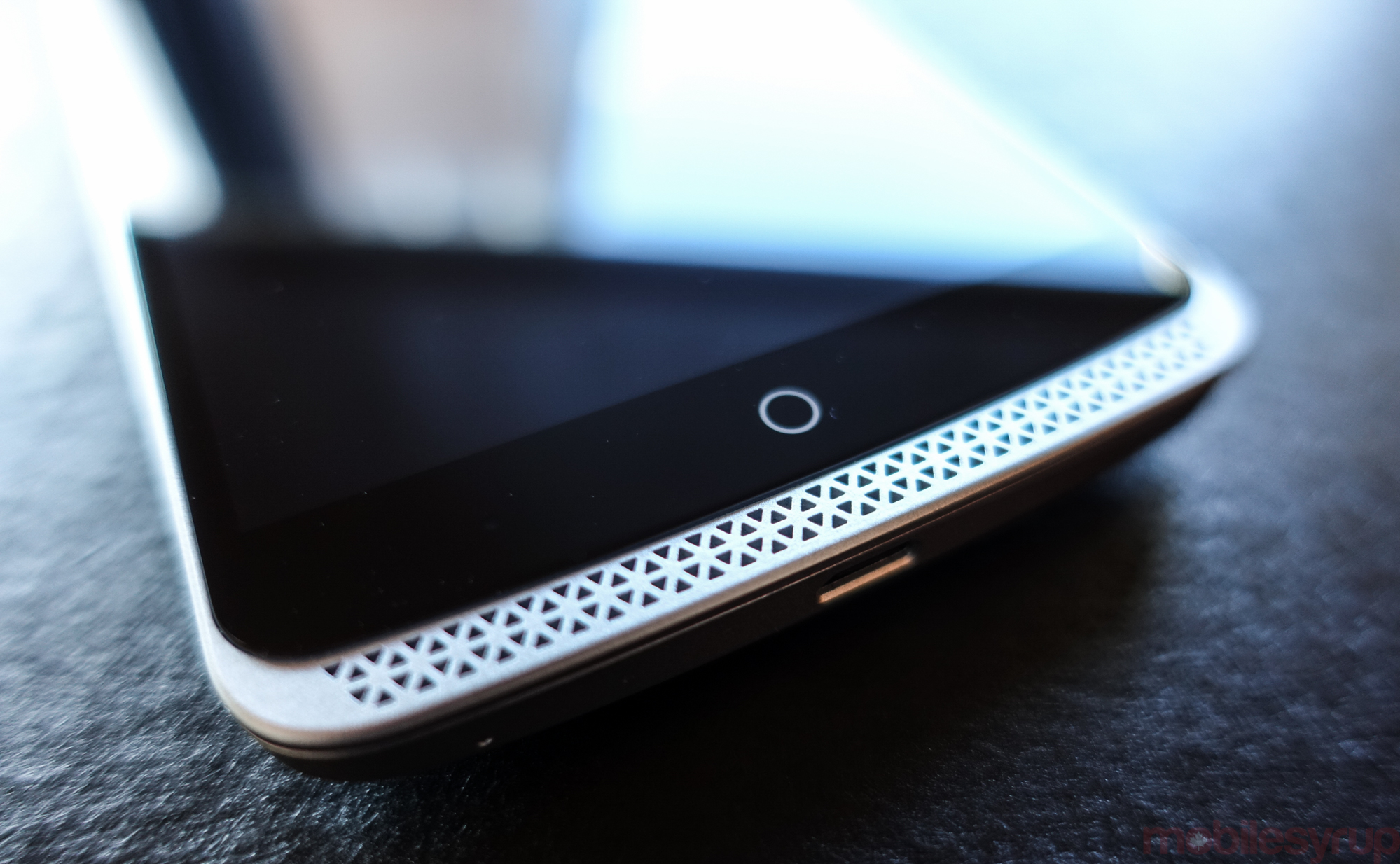
Launched in the U.S. in mid-2015, the Axon is ZTE’s line of North America-friendly smartphones, offering specs that hardcore users clamber for at prices most people can afford. In November, the company brought the Axon to Fido, which, for $400, was an approximation of what one expected of a reasonably-capable Android phone in the year 2015.
Its more expensive kin, the recently-released-in-Canada Axon Pro, available exclusively through Newegg.ca for $650, retains the metal chassis and dynamic, self-conscious design language of the original, but upgrades the internals to extend its life cycle.
ZTE plays to the strengths of a small but vocal consumer base with the Axon: it’s a pocket computer that does everything mostly right, but somehow leaves a soft impression. Given the saturated state of the Android smartphone market in general, this may not be a surprise, but the Axon Pro puts up a good fight on its way to the middle.

Specs
- Android 5.1.1 Lollipop
- 5.5-inch 2560 x 1440 pixel IPS LCD panel, Gorilla Glass 3
- Qualcomm Snapdragon 810 SoC (4x 2Ghz Cortex-A57, 4x 1.5Ghz Cortex-A53
- 4GB RAM / 32-64GB internal storage
- 13MP rear camera sensor (plus 2MP secondary sensor for depth), shutter button
- 4K rear video capture @ 30fps, 1080p video capture @ 30fps
- 8MP front-facing camera
- 3,000mAh battery, Quick Charge 2.0 compatible
- WiFi (a/b/g/n/ac), Bluetooth 4.0
- HiFi Audio compatibility
- 153.9 x 73.7 x 9.4 mm
- 173 grams
- LTE B2/B4/B5/B12/B17/B29/B30, CA Band 2/4 + Band 12/B17 – CA Band 2/4 + Band 29 (taken from official site)
- $649.99 outright (Newegg.ca)
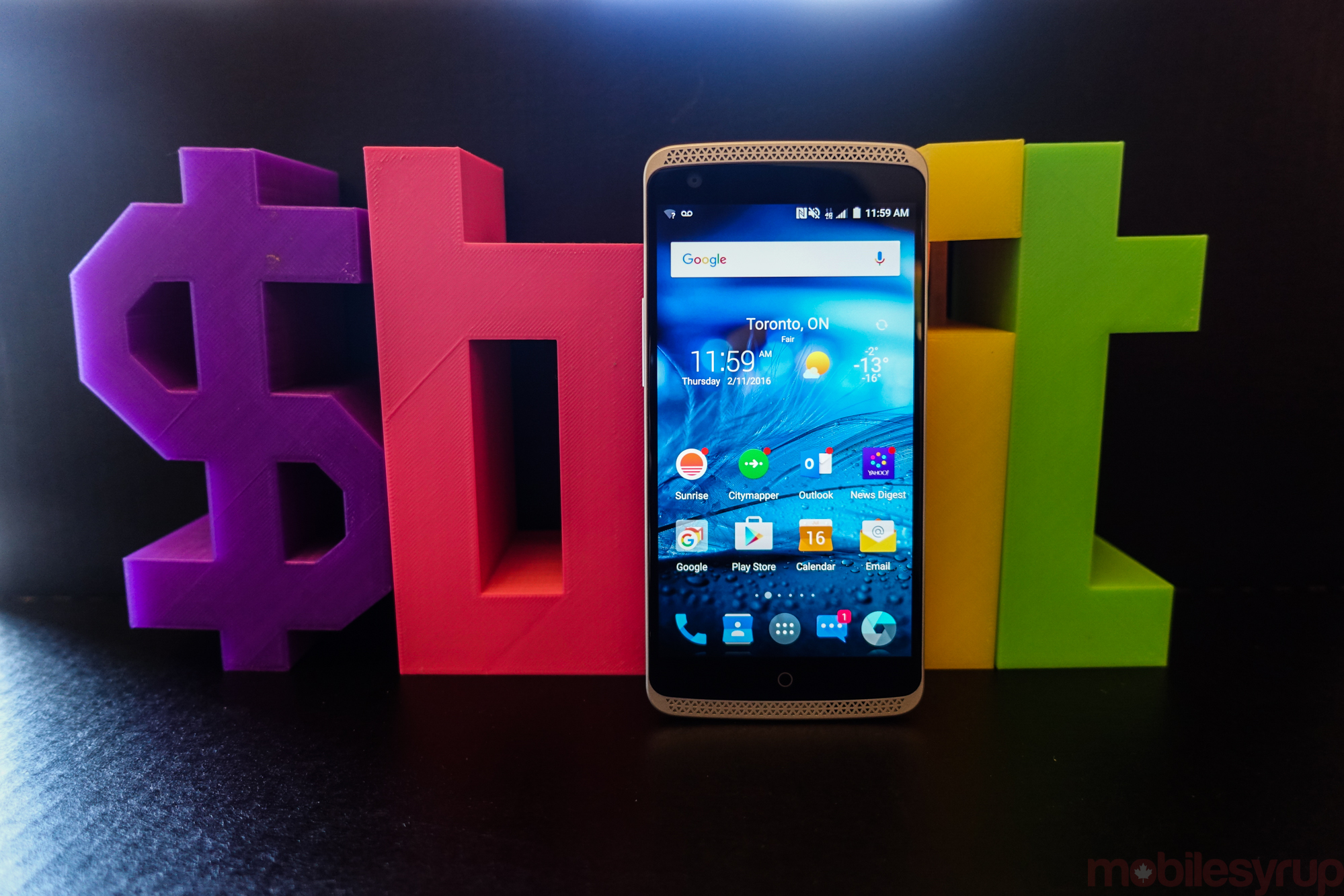
The Axon Pro looks progressive for a modern smartphone, with a repeating pattern of interlaced triangles forming grills above and below the 5.5-inch LCD panel. The rounded corners and aluminum frame (reviewed in Chromium Silver) give the impression of a sporty sedan, though ZTE’s desire to retain capacitive buttons for navigating the Android 5.1-based interface feels more a shareholder consideration than a vital usability directive.
Around back, the dual-sensor camera setup pairs nicely with a leftover allotment of triangle cutouts, flanked to the left by two LEDs. There’s a self-consciousness to the design, which ZTE said it obtained from extensive use of focus groups.
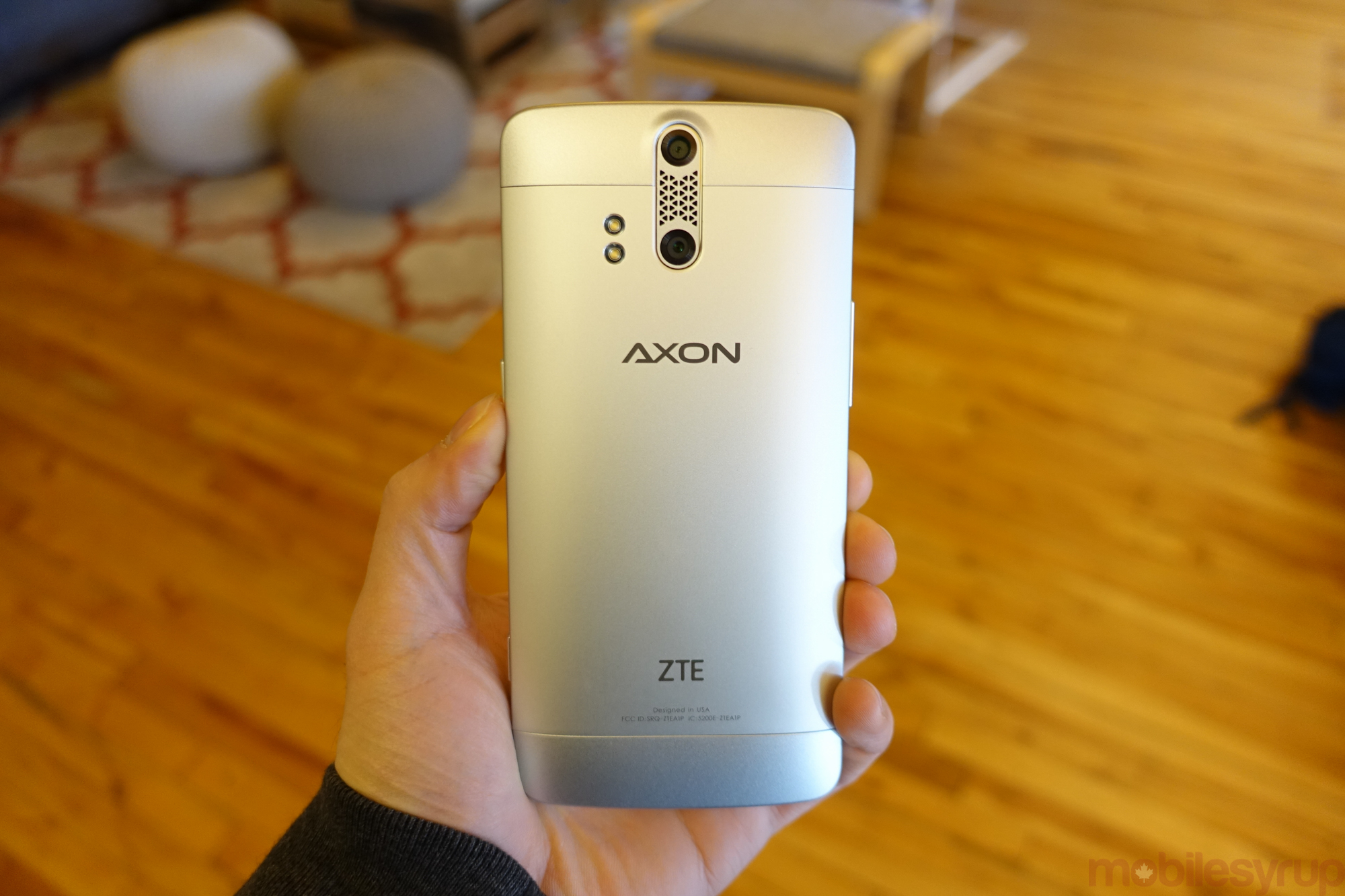
At 173 grams, the Axon Pro feels hefty and secure, but the plastic clip-ons covering the antennas are not aligned with the metal chassis, and were not properly colour-matched during production.
Axon’s so-called 2K IPS display is sharp and bright, with moderately wide viewing angles, but like many moderately-priced smartphones the Axon Pro has relatively high levels of light bleed at the top and bottom of the panel. It doesn’t detract from the day-to-day experience, but blacks do look a little washed out as a result.
The actual software is an area ZTE took care not to skin too heavily, working with focus groups to find a compromise between value-added features and the Nexus-like experience many potential buyers of unlocked Android phones covet. In the U.S., the $400 Axon Pro goes up against the $500 Nexus 6P, and though the latter wins in almost every conceivable category, for many ZTE’s flagship will hit every checkmark. In Canada, the choice isn’t so obvious: at $650, the device is only $50 cheaper than the 32GB Nexus 6P, and when you’re already spending that much you may as well go for the best option.
The stock launcher looks only marginally different to the Google Now Launcher, but lacks a number of features (and regular feature updates), such as standardized icon sizes, and quick access to the Now drawer. ZTE also preloads a number of apps, like alternative keyboard TouchPal, and, strangely, Yahoo Sports, along with useless shareware in the form of something called ZTE Perks.
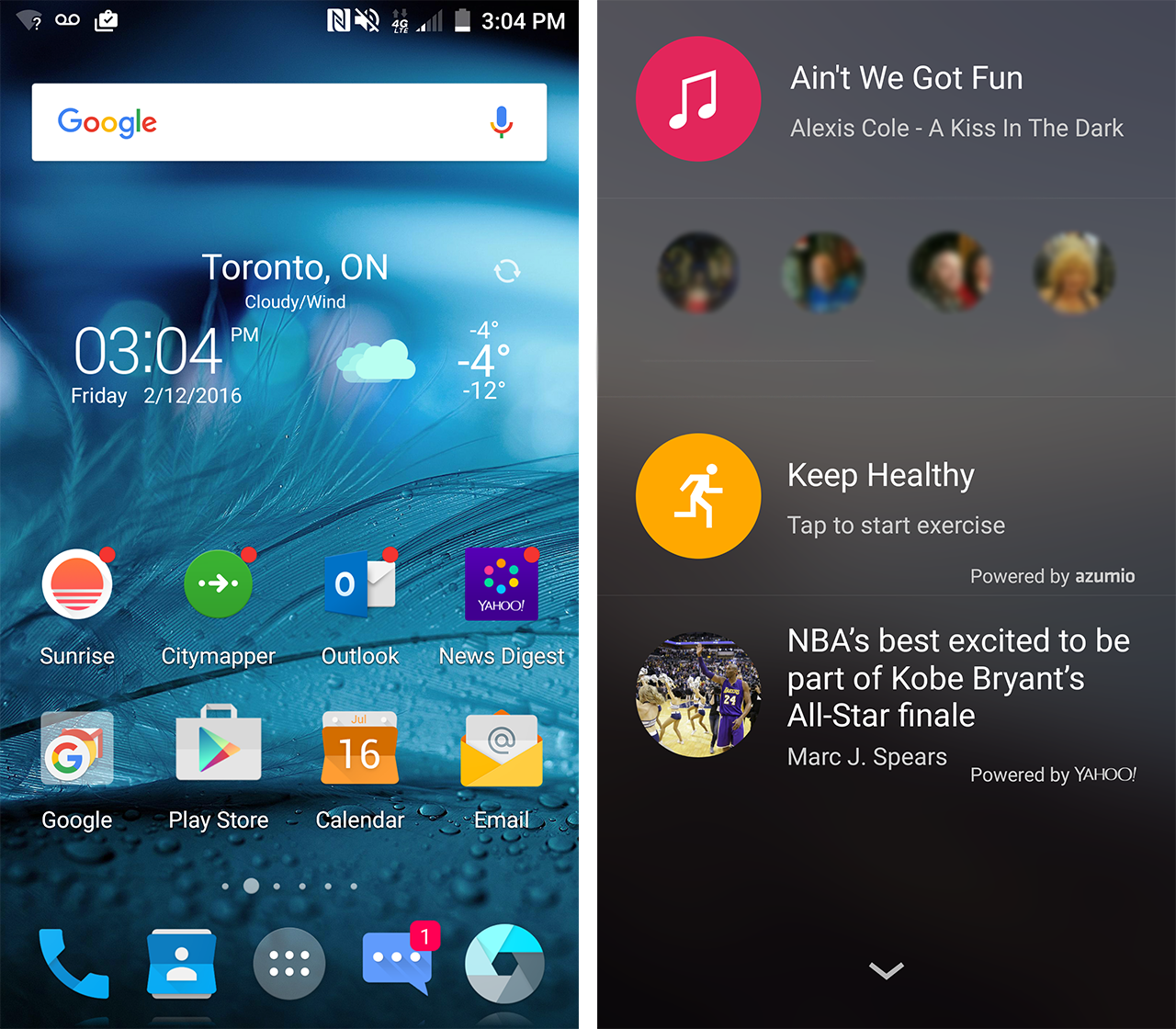
There is one nuance to the launcher, a ham-fisted “hub” called Z-Space that is accessed by swiping up from the bottom of any home screen. Four sections — music, favourite contacts, fitness, and news — each show a low-density amount of content, and are, in my opinion, wasted opportunities.
As expected with a Snapdragon 810 chip and 4GB of RAM, the Axon Pro handles well. First-party apps, like the camera, open quickly and, paired with the dedicated shutter, leave a positive impression.

That camera, with its 13MP main sensor, is adequate for most scenarios. Despite the relatively small main sensor, the accompanying F1.8 lens is wide enough to let in a comparably large amount of light, allowing for decent low-light results.
The problem is that the sensor isn’t particularly good at figuring out the proper exposure of a scene, so many shots turned out to be washed out or too dark. A robust manual mode makes up for some of these shortcomings, but, going back to the Nexus 6P comparison, the Axon Pro isn’t in the same league.
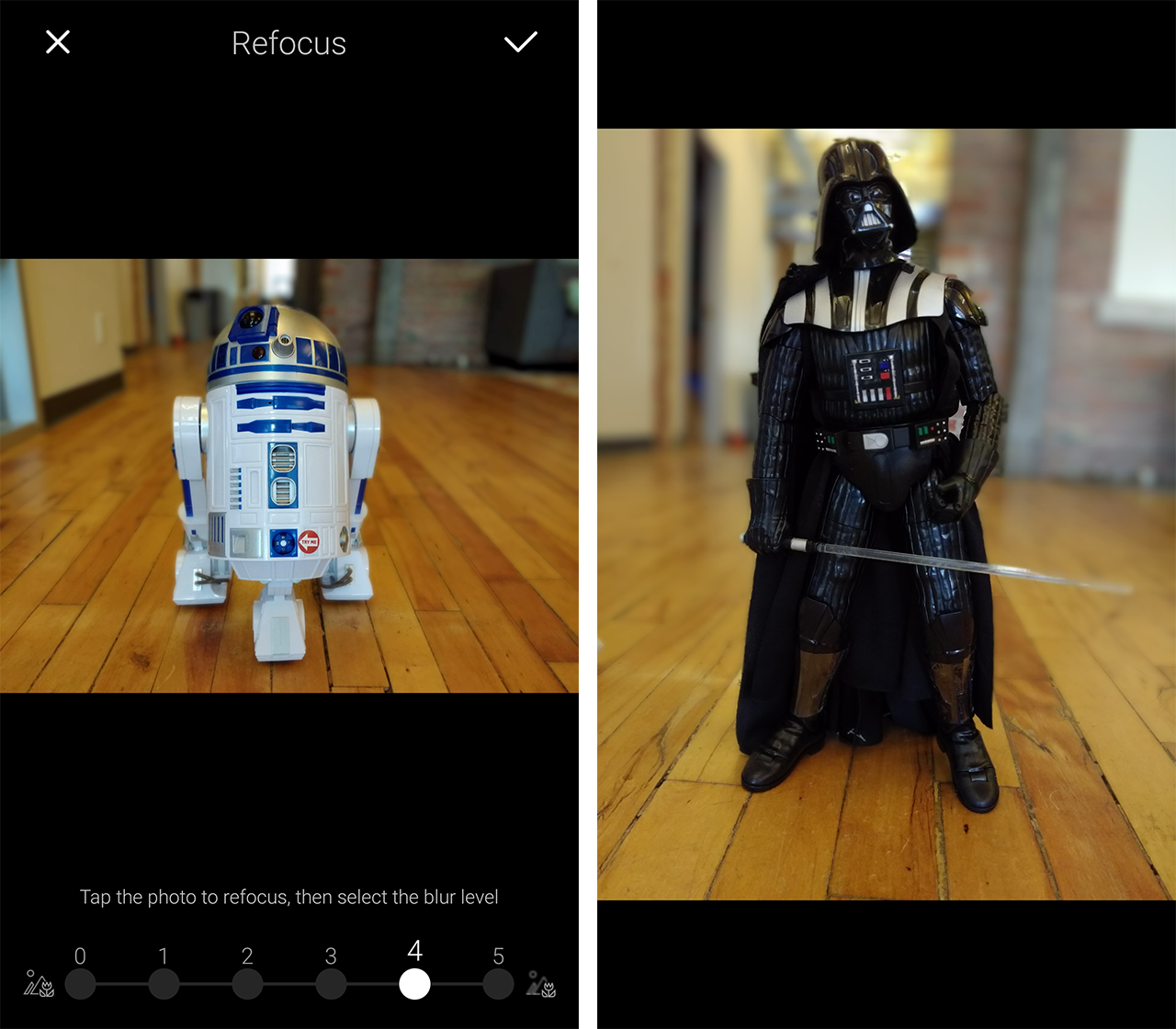
The phone does, however, harken back to the HTC One M8 with a second sensor that allows for non-destructive, on-the-fly depth changes. With the additional 2MP sensor, users can alter the depth of field to a comedic extent, but used well, the gimmicky feature can make for stark, impressive contrasts.
Unfortunately, save for a few cute Star Wars-themed vignettes, the depth control lacks… you know. Technically, it’s possible to dip below F1.0, but the effect looks tremendously artificial; real depth of field, like that obtained from the high-quality F1.9 glass on the Samsung Galaxy S6, for example, is ideal.
On the battery side, the phone’s non-removable 3,000mAh cell lasts long enough to be considered “all-day,” but shouldn’t be thought to compete with best in the category. That the Axon Pro runs Android 5.1.1, which lacks the Doze and App Standby features of Marshmallow and the Nexus lineup, exacerbates the issue. There is little prospect of the device receiving Android 6.0 in the near future, too, since ZTE has a poor track record of keeping its phones up to date.

Being an unlocked device, the Axon Pro connects to all the relevant LTE networks in Canada, but lacks support for Band 7, which Rogers and Bell use in major urban areas for added speed and capacity. Speed tests were pretty disappointing as a result, never reaching higher than 25 megabits per second down with my Bell tester SIM, and under 2 megabits up.
The Axon Pro is not the best smartphone on the market, but at $650 it is a competent device for the price. More importantly, it shows that ZTE and its ilk can create a device that competes with the names of Samsung and LG, making it increasingly difficult for them to differentiate. The Axon Pro may not have the best camera, and the lack of a fingerprint sensor and the latest version of Android is frustrating, but it works.
If it wasn’t for the absurd markup — at today’s exchange rate, the $400 USD Axon Pro should be around $550 CAD, not $650 — I’d be much more willing to recommend it. But as it stands, there are better phones for less money.


